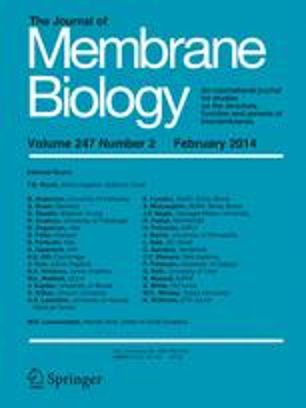Ver ítem
- xmlui.general.dspace_homeCentros e Institutos de InvestigaciónCICVyA. Centro de Investigación en Ciencias Veterinarias y AgronómicasInstituto de GenéticaArtículos científicosxmlui.ArtifactBrowser.ItemViewer.trail
- Inicio
- Centros e Institutos de Investigación
- CICVyA. Centro de Investigación en Ciencias Veterinarias y Agronómicas
- Instituto de Genética
- Artículos científicos
- Ver ítem
Prediction of aquaporin function by integrating evolutionary and functional analyses
Resumen
Aquaporins (AQPs) are a family of channel proteins, which transport water and/or small solutes across cell membranes. AQPs are present in Bacteria, Eukarya, and Archaea. The classical AQP evolution paradigm explains the inconsistent phylogenetic trees by multiple transfer events and emphasizes that the assignment of orthologous AQPs is not possible, making it difficult to integrate functional information. Recently, a novel phylogenetic framework of
[ver mas...]
Aquaporins (AQPs) are a family of channel proteins, which transport water and/or small solutes across cell membranes. AQPs are present in Bacteria, Eukarya, and Archaea. The classical AQP evolution paradigm explains the inconsistent phylogenetic trees by multiple transfer events and emphasizes that the assignment of orthologous AQPs is not possible, making it difficult to integrate functional information. Recently, a novel phylogenetic framework of eukaryotic AQP evolution showed congruence between eukaryotic AQPs and organismal trees identifying 32 orthologous clusters in plants and animals (Soto et al. Gene 503:165–176, 2012). In this article, we discuss in depth the methodological strength, the ability to predict functionality and the AQP community perception about the different paradigms of AQP evolution. Moreover, we show an updated review of AQPs transport functions in association with phylogenetic analyses. Finally, we discuss the possible effect of AQP data integration in the understanding of water and solute transport in eukaryotic cells.
[Cerrar]

Autor
Perez Di Giorgio, Juliana Andrea;
Soto, Gabriela Cinthia;
Alleva, Karina Edith;
Jozefkowicz, Cintia;
Amodeo, Gabriela;
Muschietti, Jorge Prometeo;
Ayub, Nicolás Daniel;
Fuente
The Journal of Membrane Biology 247 (2) : 107–125 (February 2014)
Fecha
2014-02
Editorial
Springer
ISSN
0022-2631
1432-1424
1432-1424
Formato
pdf
Tipo de documento
artículo
Palabras Claves
Derechos de acceso
Restringido
 Excepto donde se diga explicitamente, este item se publica bajo la siguiente descripción: Creative Commons Attribution-NonCommercial-ShareAlike 2.5 Unported (CC BY-NC-SA 2.5)
Excepto donde se diga explicitamente, este item se publica bajo la siguiente descripción: Creative Commons Attribution-NonCommercial-ShareAlike 2.5 Unported (CC BY-NC-SA 2.5)

